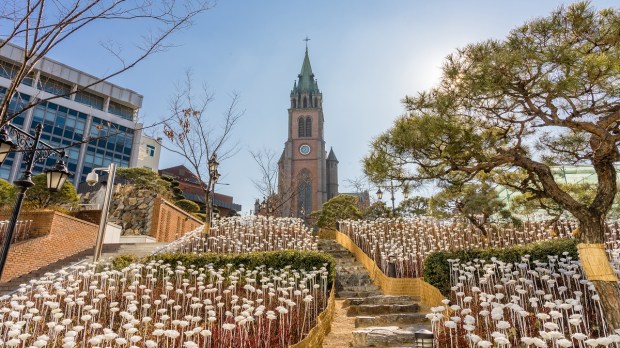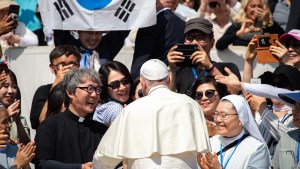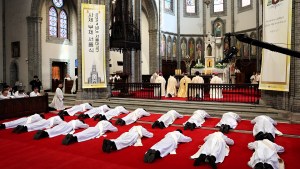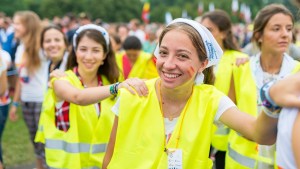While the majority of South Koreans continue to claim no religious affiliation, the Catholic population has surged in the last 60 years. Now, as the 2025 Year of Jubilee approaches, the Catholic Church in South Korea is working to consolidate its flock and return to pre-pandemic normalcy before hosting the next World Youth Day in 2027.
The Catholic population of South Korea was the focus of a recent video from Rome Reports, in which the outlet notes an enormous growth in the country’s number of Catholics. In the 1960s there were estimated to be about half a million Catholics in South Korea, which surged to nearly 6 million in 2024.
Data from Statista from 2023 shows Catholics represent about 11% of South Korea’s 51.7 million citizens, with “nones” accounting for 51%, Protestants at 20%, and Buddhists at 17%.
Not only has South Korea been shown to be a nation hospitable to a growing flock, but it is also a place where religious vocations flourish. In December 2023, 16 priests and 25 deacons were ordained in the Archdiocese of Seoul.Catholic World Report notes that none of the 25 deacons were permanent deacons, meaning that they have become deacons as part of their path to the priesthood.
While South Korea is the very picture of a growing Church, it has had to deal with the same post-pandemic struggles as much of the rest of the world. A February report from La Croix International found a 35% drop in weekly Mass attendance from 2019 to 2022, with the problem persisting in 2024. Rather than a diminishment of faith, however, much of this lack of return, the Archdiocese has found, is that many former Mass-goers have been sold on the convenience of the “televised Mass.”
Reuniting the Mystical Body
While this represents a challenge for catechesis and a need to teach the faithful about the Eucharist and the liturgy, the Archdiocese has no interest in ending the practice of broadcasting weekly Masses, because it found that televised Masses are a boon to the elderly and infirm.
Instead the Archdiocese has published a 300-page white paper with suggestions on how the Church may adapt to the post-pandemic world and draw the community back together.
Called “Church Every Day,” the initiative is attempting to draw the flock out through parish activities. For example, Father Michael Kim Jong-wook holds a post-Mass buffet with music once or twice a month from his parish rectory. Other outreach includes outdoor activities, gatherings for meals, and tutoring. The general idea is to bring the community back together for both religious and non-religious activities, reminding the people of the vibrance of their Catholic community.
“It’s an evening reserved for the youth, where they can meet, talk, have fun; that’s also the spirit of a parish, it’s the community,” Fr. Jong-wook explains. “We know that young people can feel lonely and isolated; I hope this will encourage them to come back more often.”
It is the Archdiocese’s hope that the televised Masses will be seen as supplementary to religious practice, and that these online tools developed over the pandemic years (like Catholic apps) will continue to function, but are not meant to supersede our calling to worship together as a community.
“The Church is a life of brotherhood,” insists Father Lee Cheol-soo. “It’s important that everyone can come together under the same roof to share this moment together.”




